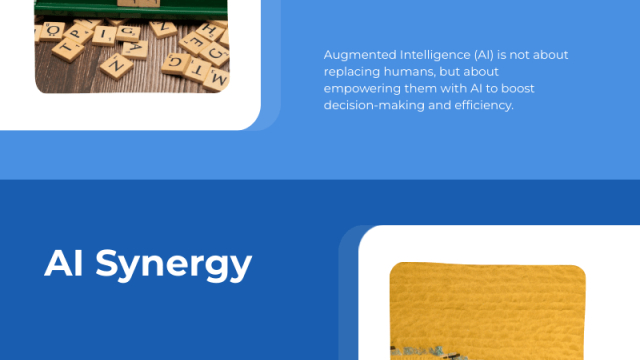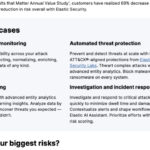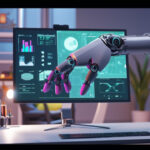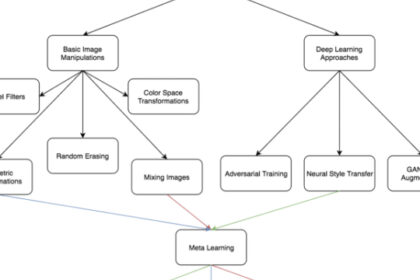For decades, the narrative surrounding artificial intelligence (AI) has been dominated by two poles: the promise of unparalleled efficiency through automation, or the dystopian fear of machines replacing human endeavor. Yet, as AI rapidly evolves, a more nuanced and profoundly impactful vision is emerging—one where AI doesn’t merely automate tasks but actively augments human capabilities, fostering a synergistic collaboration that unlocks unprecedented potential. This isn’t about AI doing our jobs, but about AI enhancing our ability to do them better, faster, and with greater insight. It challenges us to rethink the very essence of work, creativity, and problem-solving.
- Understanding the Paradigm Shift: From Automation to Augmentation
- The Limitations of Pure Automation
- Defining Augmented Intelligence: A New Synergy
- Historical Context: The Evolution of Human-Machine Interaction
- The Symbiotic Relationship: How Humans and AI Complement Each Other
- Human Strengths: Creativity, Empathy, Intuition, and Critical Thinking
- AI Strengths: Speed, Scale, Data Processing, and Pattern Recognition
- The Power of Hybrid Intelligence
- Key Sectors Transformed by Augmented Intelligence
This article delves into the transformative power of human-AI collaboration, exploring how augmented intelligence is redefining industries, shaping our future, and challenging our perceptions of what’s possible. We will move beyond the simplistic view of machines as mere tools to consider them as cognitive partners, examining the ethical considerations, practical applications, and strategic imperatives necessary to harness this profound technological shift. Prepare to explore a future where human ingenuity, amplified by AI, leads to innovation far beyond our current imagination.

Understanding the Paradigm Shift: From Automation to Augmentation
The journey of AI has been marked by significant milestones, often centered on the ability of machines to perform tasks traditionally requiring human intelligence. While automation remains a critical component of AI’s utility, a more profound shift is underway towards augmentation. This transition represents a fundamental rethinking of the relationship between humans and intelligent systems.
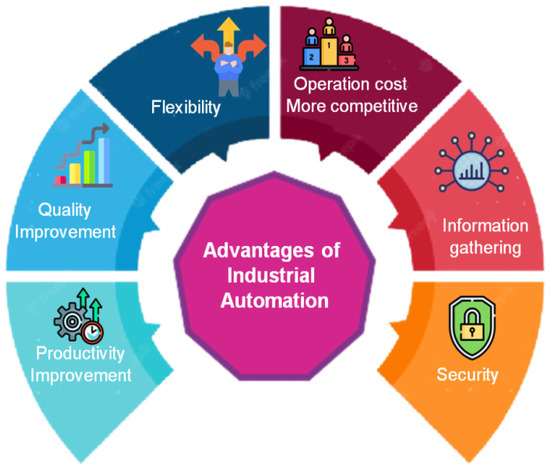
The Limitations of Pure Automation
Automation, at its core, is about replicating human actions to increase efficiency and reduce manual labor. From assembly lines to robotic process automation (RPA) in office environments, the goal has been to streamline repetitive, rule-based tasks. While incredibly valuable, pure automation often operates within predefined parameters. It excels at execution but struggles with ambiguity, complex decision-making requiring empathy or nuanced understanding, and tasks demanding genuine creativity or strategic foresight.
Consider customer service chatbots: they can handle routine queries efficiently, but stumble when faced with emotionally charged interactions or non-standard problems that require a human touch. This highlights automation’s inherent limitations; it optimizes known processes but rarely innovates or adapts to truly novel situations without significant human reprogramming. Relying solely on automation risks creating brittle systems that lack the flexibility and adaptive intelligence needed for a dynamic world.

Defining Augmented Intelligence: A New Synergy
Augmented intelligence, by contrast, is a human-centered partnership model. It focuses on how AI can assist and enhance human decision-making, problem-solving, and creative processes, rather than replacing them entirely. This synergy leverages the distinct strengths of both humans and AI: AI’s capacity for rapid data processing, pattern recognition, and computation, combined with human abilities such as critical thinking, emotional intelligence, intuition, and ethical reasoning.
Key characteristics of augmented intelligence include:
- Enhancement, not Replacement: AI acts as a co-pilot, not an autopilot.
- Human in the Loop: Human oversight and judgment remain crucial.
- Cognitive Extension: AI extends human cognitive abilities, allowing us to process more information, identify deeper insights, and explore more possibilities.
- Adaptive Learning: Both humans and AI learn from their interactions, leading to continuous improvement.
- Creativity and Innovation: The ability to generate novel ideas, connect disparate concepts, and think divergently remains a uniquely human forte. While AI can generate variations on existing themes, true groundbreaking innovation often stems from human intuition, curiosity, and the capacity for abstract thought.
- Emotional Intelligence and Empathy: Understanding and responding to complex human emotions, building rapport, and exercising compassion are critical in fields like healthcare, education, and customer relations. AI can process sentiment, but it lacks genuine subjective experience.
- Intuition and Judgment: Humans often make decisions based on incomplete information, drawing on experience, pattern recognition, and a “gut feeling” that AI cannot emulate. This intuitive leap, combined with critical judgment, is vital in uncertain or high-stakes scenarios.
- Contextual Understanding: Humans excel at understanding the broader context of a situation, including cultural nuances, social dynamics, and unspoken implications, which is crucial for effective communication and strategic planning.
- Unrivaled Processing Speed and Scale: AI can analyze vast datasets—billions of data points—in mere seconds, a feat impossible for humans. This capability is crucial for identifying trends, anomalies, and correlations hidden within complex information landscapes.
- Precision and Consistency: AI operates without fatigue, bias (unless programmed in), or emotional fluctuations, ensuring consistent performance in repetitive tasks and data analysis.
- Pattern Recognition: From identifying cancerous cells in medical images to detecting fraudulent transactions in financial data, AI excels at finding subtle patterns that are invisible or too complex for the human eye and brain to discern.
- Predictive Analytics: AI algorithms can forecast future trends with remarkable accuracy, based on historical data, enabling proactive decision-making in areas like market analysis, resource allocation, and risk management.
- Information Retrieval and Synthesis: AI can sift through mountains of information, summarize key findings, and present them in an understandable format, saving humans countless hours of research.
- Diagnostic Assistance: AI algorithms can detect subtle anomalies in X-rays, MRIs, and pathology slides with greater accuracy and speed than the human eye, assisting radiologists and pathologists. For example, AI can identify early signs of cancer or neurological disorders, bringing critical findings to a doctor’s attention.
- Personalized Treatment Plans: By correlating a patient’s genetic profile and lifestyle with millions of similar cases, AI can help doctors craft highly personalized treatment regimens, optimizing drug dosages and therapeutic approaches.
- Surgical Augmentation: Robotic surgery, guided by AI, allows surgeons to perform complex procedures with enhanced precision, stability, and minimal invasiveness, extending human dexterity.
- Drug Discovery: AI accelerates the drug discovery process by simulating molecular interactions and predicting the efficacy and toxicity of potential compounds, significantly reducing the time and cost involved.
- Adaptive Learning Platforms: AI can analyze a student’s learning style, pace, strengths, and weaknesses to tailor curriculum, recommend resources, and provide targeted feedback. This allows educators to focus on mentorship and complex problem-solving rather than rote instruction.
- Intelligent Tutoring Systems: AI tutors can provide immediate, personalized support, answering questions, explaining concepts, and guiding students through challenging material, freeing up teachers to address individual needs and foster critical thinking.
- Content Creation and Curation: AI can assist educators in generating diverse learning materials, summarizing complex texts, and curating relevant resources, enhancing the learning experience for students with varied needs.
- Skill Gap Analysis: For lifelong learning, AI can identify emerging skill requirements in the job market and recommend personalized learning pathways for individuals to acquire new competencies, ensuring a future-ready workforce.
- Generative AI for Design and Art: AI tools can generate design variations, artistic styles, musical compositions, and even narrative outlines, providing artists, designers, and writers with a vast palette of inspiration and foundational elements to build upon.
- Content Optimization: AI can analyze audience preferences and engagement data to help creators optimize their content for maximum impact, whether it’s adjusting a marketing campaign or refining a video script.
- Virtual Production and Animation: In film and gaming, AI assists with character animation, environment generation, and special effects, allowing human artists to focus on storytelling and creative direction with enhanced efficiency.
- Music Composition and Production: AI can suggest harmonies, melodies, and orchestrations, or even generate backing tracks, empowering musicians to experiment with new sounds and accelerate their production process.
This approach acknowledges that while AI can crunch numbers and identify correlations at scale, humans are indispensable for interpreting meaning, setting context, and applying wisdom.

Historical Context: The Evolution of Human-Machine Interaction
The concept of machines augmenting human capabilities is not entirely new. From the abacus to the calculator, and from early computers to modern software, tools have always extended our physical and mental reach. The printing press augmented knowledge dissemination, the telescope augmented vision, and the internet augmented communication. AI represents the next frontier in this long history, offering an unprecedented level of cognitive augmentation.
Early forms of AI were largely symbolic and rule-based, assisting with logical deductions. As machine learning emerged, AI began to handle complex pattern recognition, leading to breakthroughs in fields like image processing and natural language understanding. Today, with deep learning and neural networks, AI systems can learn from vast datasets, identify intricate relationships, and even generate novel content. This evolution has paved the way for truly interactive and assistive AI, moving beyond mere tools to become genuine collaborators in our intellectual pursuits.
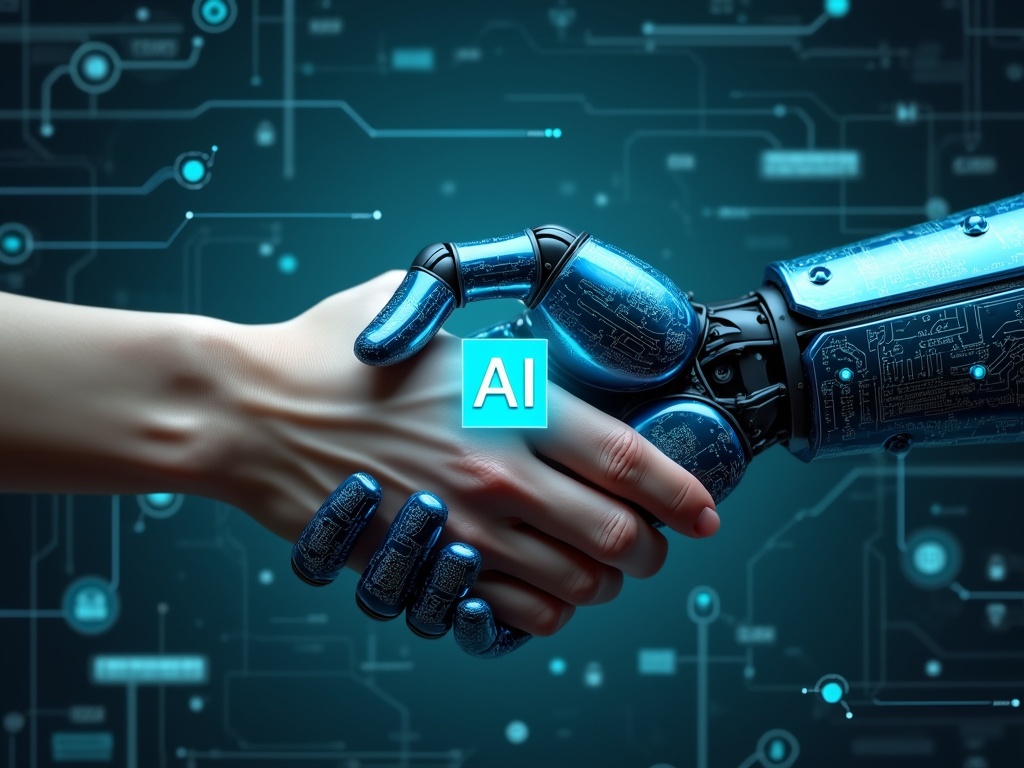
The Symbiotic Relationship: How Humans and AI Complement Each Other
The true power of human-AI collaboration lies in recognizing and leveraging the unique strengths each brings to the table. It’s not a competition, but a partnership where the sum is greater than its parts.
Human Strengths: Creativity, Empathy, Intuition, and Critical Thinking
Humans possess a remarkable array of cognitive and emotional capabilities that AI, despite its advancements, struggles to replicate. These include:
Ethical Reasoning and Values: Deciding what is “right” or “just” requires a framework of values, societal norms, and a moral compass—qualities inherent to human consciousness. AI can be programmed with ethical guidelines, but it cannot feel* the weight of an ethical dilemma.
AI Strengths: Speed, Scale, Data Processing, and Pattern Recognition
AI’s formidable capabilities perfectly complement human strengths, providing an unparalleled engine for data-driven insights and efficient execution:
The Power of Hybrid Intelligence
When these distinct strengths are combined, we unleash what is known as “hybrid intelligence” or “collective intelligence.” Imagine a doctor using an AI system to analyze a patient’s medical history, genetic data, and millions of similar cases to suggest potential diagnoses and treatment plans, while the doctor applies their clinical judgment, empathy, and understanding of the patient’s individual circumstances to make the final, informed decision.
This collaborative model leads to outcomes far superior to what either humans or AI could achieve alone. It reduces errors, accelerates discovery, fosters deeper insights, and ultimately elevates human performance. The most impactful innovations of the coming decades will likely emerge from this profound synthesis of human and artificial intelligence.
Key Sectors Transformed by Augmented Intelligence
Augmented intelligence is not a futuristic fantasy; it’s already reshaping industries across the globe, enhancing human capabilities and driving unprecedented innovation.
Healthcare: Precision Medicine and Diagnostic Enhancement
In healthcare, human-AI collaboration is revolutionizing patient care. AI systems can analyze vast amounts of medical data—patient records, genomic sequences, imaging scans, and research papers—to identify patterns indicative of disease, predict treatment efficacy, and even discover new drug candidates.
Internal Link Suggestion: Read more about the ethical implications of AI in healthcare for a deeper dive.
Education: Personalized Learning and Skill Development
Augmented intelligence promises to transform education from a one-size-fits-all model to a highly personalized and adaptive experience.
Creative Industries: Unleashing New Artistic Frontiers
While creativity is often considered a uniquely human trait, AI is proving to be a powerful partner in artistic and creative endeavors, augmenting human imagination rather than replacing it.


